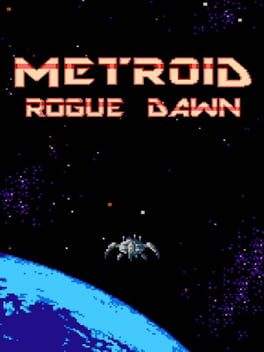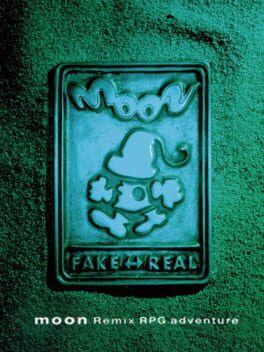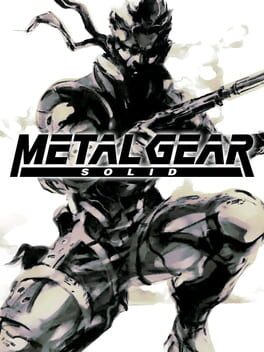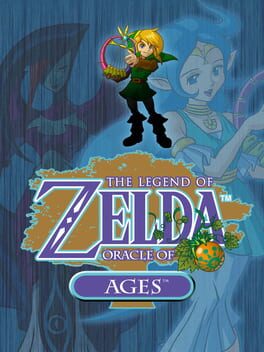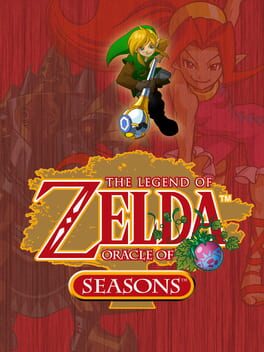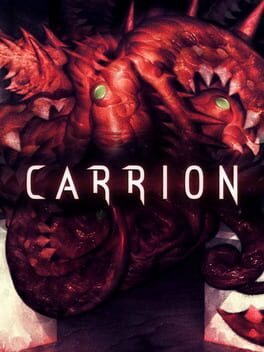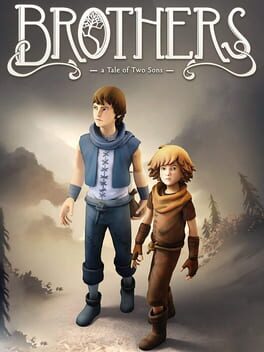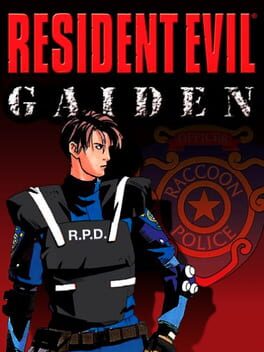novalin
2002
Here’s where it lost me:
1. Firing the water cannon isn’t fun. It’s like playing that water blasting carnival game over and over again. And like water, it lacks flavor.
2. The novelty of the water-jet-pack wore off quickly. It’s just a different style of long jump, yet more tedious. Nothing special here.
3. The only thing less fun than aiming a water cannon at a blob of mud is slowly swimming across large bodies of water.
4. What’s the point of having such limited lives? All you are doing is making me retrace my steps through a near empty town back to the start of the level I died on. Why punish me like this? Isn’t starting at the beginning of the level again punishment enough?
Yuck
1. Firing the water cannon isn’t fun. It’s like playing that water blasting carnival game over and over again. And like water, it lacks flavor.
2. The novelty of the water-jet-pack wore off quickly. It’s just a different style of long jump, yet more tedious. Nothing special here.
3. The only thing less fun than aiming a water cannon at a blob of mud is slowly swimming across large bodies of water.
4. What’s the point of having such limited lives? All you are doing is making me retrace my steps through a near empty town back to the start of the level I died on. Why punish me like this? Isn’t starting at the beginning of the level again punishment enough?
Yuck
2007
Controls
SMG is extremely intuitive. It all just clicks. Mechanics, power-ups, and three-dimensional challenges slowly unfold to allow you to ease into the complexities of this game. Subtle aim-assist and movement assisting keeps the focus on fun over frustration.
There’s a harmony between pressing buttons and swiping the screens. It should be chaos yet it works with ease.
The spin move is artfully implemented. It’s a multifaceted tool that acts as an attack, an interaction maneuver (e.g. screws), a propulsion boost in water, and an extra oomph after jumping. That final usage, spinning in air after jumping, is actually quite genius as it’s what allows the player to safely navigate to landing pads as it softens the jump while also lifting.
Design
There is so much rich, brilliant, innovative level design and use of three-dimensional space throughout the galaxy. The boss battles, of which there are plenty, are fairly simple yet always fun. And there’s a clever mixture of activities, spaces, puzzles, and upgrades, making it so that no level is like any other.
Tilt mechanic based levels such as surfing and golf don’t overstay their welcome. I would easily be frustrated by these types of levels if I was asked to collect 3-7 stars while tilting my way through bumpy waves or riding a ball on a precarious, narrow field. Instead the designers set up these levels to be one-and-done, a wise move on their part.
Much like SM64, and much unlike SMS, Galaxy is gracious with the 1-ups, and even strategically placed them in areas that are most dangerous. The creators recognize that punishing the players with limited lives is not fitting in this series.
Tutorials are cleverly camouflaged and well-integrated. For example, when first moving on ice a cute penguin challenges you to catch him. This allows you to get your feet wet (pun intended) before tackling the level. You never feel like you are being told what to do, and because the controls are so intuitive and finely tuned, picking up a new mechanic comes with ease.
Camera
The camera, which you would expect to be the biggest challenge in developing such a topsy-turvy 3D experience, works beautifully. It locks and adjusts to predetermined angles for most of the levels while allowing for freedom to manually rotate only in those areas where appropriate. It always feels right, focusing your attention on the path ahead with just the right amount of edge space to plan ahead.
Visuals
SMG is a visual spectacle. It’s simply dazzling. I found myself frequently hitting the screenshot button on my Switch as Mario soared through the starry fields that were painted vividly with swaths of purple and blue tones.
There's also a ton of attention to detail and polish that went in to enhancing the visual experience. For example, if you spin near friendly characters they will gyrate in excitement.
Story
There’s just enough story elements running throughout the adventure to keep it anchored in the narrative without interfering with the fun. And familiar staples to the Mario universe are sprinkled throughout the game who drop hints and add charming dialogue.
Closing Thoughts
The deeper you get the richer the experience becomes. Levels become more complex, more characters appear, different star types are located, planets can be revisited with new challenges, the story unfolds, and more and more Mario power-ups are discovered. This is a game that only gets richer and more flavorful the more you play.
SMG is extremely intuitive. It all just clicks. Mechanics, power-ups, and three-dimensional challenges slowly unfold to allow you to ease into the complexities of this game. Subtle aim-assist and movement assisting keeps the focus on fun over frustration.
There’s a harmony between pressing buttons and swiping the screens. It should be chaos yet it works with ease.
The spin move is artfully implemented. It’s a multifaceted tool that acts as an attack, an interaction maneuver (e.g. screws), a propulsion boost in water, and an extra oomph after jumping. That final usage, spinning in air after jumping, is actually quite genius as it’s what allows the player to safely navigate to landing pads as it softens the jump while also lifting.
Design
There is so much rich, brilliant, innovative level design and use of three-dimensional space throughout the galaxy. The boss battles, of which there are plenty, are fairly simple yet always fun. And there’s a clever mixture of activities, spaces, puzzles, and upgrades, making it so that no level is like any other.
Tilt mechanic based levels such as surfing and golf don’t overstay their welcome. I would easily be frustrated by these types of levels if I was asked to collect 3-7 stars while tilting my way through bumpy waves or riding a ball on a precarious, narrow field. Instead the designers set up these levels to be one-and-done, a wise move on their part.
Much like SM64, and much unlike SMS, Galaxy is gracious with the 1-ups, and even strategically placed them in areas that are most dangerous. The creators recognize that punishing the players with limited lives is not fitting in this series.
Tutorials are cleverly camouflaged and well-integrated. For example, when first moving on ice a cute penguin challenges you to catch him. This allows you to get your feet wet (pun intended) before tackling the level. You never feel like you are being told what to do, and because the controls are so intuitive and finely tuned, picking up a new mechanic comes with ease.
Camera
The camera, which you would expect to be the biggest challenge in developing such a topsy-turvy 3D experience, works beautifully. It locks and adjusts to predetermined angles for most of the levels while allowing for freedom to manually rotate only in those areas where appropriate. It always feels right, focusing your attention on the path ahead with just the right amount of edge space to plan ahead.
Visuals
SMG is a visual spectacle. It’s simply dazzling. I found myself frequently hitting the screenshot button on my Switch as Mario soared through the starry fields that were painted vividly with swaths of purple and blue tones.
There's also a ton of attention to detail and polish that went in to enhancing the visual experience. For example, if you spin near friendly characters they will gyrate in excitement.
Story
There’s just enough story elements running throughout the adventure to keep it anchored in the narrative without interfering with the fun. And familiar staples to the Mario universe are sprinkled throughout the game who drop hints and add charming dialogue.
Closing Thoughts
The deeper you get the richer the experience becomes. Levels become more complex, more characters appear, different star types are located, planets can be revisited with new challenges, the story unfolds, and more and more Mario power-ups are discovered. This is a game that only gets richer and more flavorful the more you play.
1996
Revisiting SM64
In the Summer of 1996 I was 15 years old. One afternoon I wandered into the local Blockbuster (RIP) to browse the used video games they had for sale. That's where I first crossed paths with Super Mario 64 (and the Nintendo 64 for that matter), which was prominently displayed on the large demo machine near the entrance. At this point I had already developed a bias against 3D video games, not because of some perceived, inherent inferiority to two dimensions, but because in their pioneering state they were so aesthetically unappealing. I saw them as a new phase in gaming that simply wasn't ready for consumption. So when I approached the demo and lifted the Nintendo 64 controller I did so somewhat begrudgingly. It took about 5 minutes before I was hooked. Once it arrived at my home I devoted a weekend to acquiring all 120 stars, my eyeballs glued to the screen.
24 years later I revisited SM64 on the Nintendo Switch. Quite quickly the mechanics and acrobatic maneuvers came back to me. And while the blurry textures and blocky world looked even blurrier and blockier than memory, the dated piece that made me cringe and grumble the most was the camera. Back when 3D games started, solving for the camera was always a hot topic, and was so for years. In so many of these early 3D games the camera would collide with walls, zoom in and out unexpectedly, and unhinge left and right as the player traversed through the world. It was a time when providing two camera styles plus the ability to zoom in and out was considered groundbreaking. It made me wonder: If it wasn't for my nostalgic ties to SM64 would I have tossed this relic aside?
While the camera is clearly the worst aspect of SM64, it's the combination of the camera and the looseness of Mario's movements that cause the most pain. This is a platformer, albeit a more open world version of one, and with platforms comes pits. What this translates to is countless perilous moments where I am on the brink of reaching my goal just to end up slipping off a narrow, jagged polygon. I suspect I died just as much 24 years ago as I did with this recent play-through, but the difference is that way back then I interpreted these moments solely as challenging, whereas today I see them as both challenging and frustrating.
Camera and slippery Mario aside, this game is still extremely playable. It's such a delight to control the ninja flipping Mario and to collect stars within the expertly crafted levels. The designers smartly placed a variety of challenges in each course, and while they hint to what star to search for next, they left it up to the player to discover them in the order that they please. And each environment has its own special flare and theme, so moving between courses always feels fresh.
Next up I have Super Mario Sunshine and Super Mario Galaxy. I'm told that the former has similarly frustrating camera and control problems, and since I have never played either of these games this will be an interesting test to see if I have the patience to play SMS all the way through. Here we go.
In the Summer of 1996 I was 15 years old. One afternoon I wandered into the local Blockbuster (RIP) to browse the used video games they had for sale. That's where I first crossed paths with Super Mario 64 (and the Nintendo 64 for that matter), which was prominently displayed on the large demo machine near the entrance. At this point I had already developed a bias against 3D video games, not because of some perceived, inherent inferiority to two dimensions, but because in their pioneering state they were so aesthetically unappealing. I saw them as a new phase in gaming that simply wasn't ready for consumption. So when I approached the demo and lifted the Nintendo 64 controller I did so somewhat begrudgingly. It took about 5 minutes before I was hooked. Once it arrived at my home I devoted a weekend to acquiring all 120 stars, my eyeballs glued to the screen.
24 years later I revisited SM64 on the Nintendo Switch. Quite quickly the mechanics and acrobatic maneuvers came back to me. And while the blurry textures and blocky world looked even blurrier and blockier than memory, the dated piece that made me cringe and grumble the most was the camera. Back when 3D games started, solving for the camera was always a hot topic, and was so for years. In so many of these early 3D games the camera would collide with walls, zoom in and out unexpectedly, and unhinge left and right as the player traversed through the world. It was a time when providing two camera styles plus the ability to zoom in and out was considered groundbreaking. It made me wonder: If it wasn't for my nostalgic ties to SM64 would I have tossed this relic aside?
While the camera is clearly the worst aspect of SM64, it's the combination of the camera and the looseness of Mario's movements that cause the most pain. This is a platformer, albeit a more open world version of one, and with platforms comes pits. What this translates to is countless perilous moments where I am on the brink of reaching my goal just to end up slipping off a narrow, jagged polygon. I suspect I died just as much 24 years ago as I did with this recent play-through, but the difference is that way back then I interpreted these moments solely as challenging, whereas today I see them as both challenging and frustrating.
Camera and slippery Mario aside, this game is still extremely playable. It's such a delight to control the ninja flipping Mario and to collect stars within the expertly crafted levels. The designers smartly placed a variety of challenges in each course, and while they hint to what star to search for next, they left it up to the player to discover them in the order that they please. And each environment has its own special flare and theme, so moving between courses always feels fresh.
Next up I have Super Mario Sunshine and Super Mario Galaxy. I'm told that the former has similarly frustrating camera and control problems, and since I have never played either of these games this will be an interesting test to see if I have the patience to play SMS all the way through. Here we go.
2017
Metroid: Rogue Dawn is the unofficial, fan-produced prequel to the original Metroid. Unlike most ROM hacks (ugh, there's so many bad Castlevania ones...) this is a high quality experience that takes the foundation it is built upon and expands on it greatly.
As for the game, the attention to details shines:
Aran’s helmet comes on and off depending on the environment she is in. Such a simple act of having two looks for Aran does more than add some eye candy. It deepens the sense that you are exploring dangerous, unknown spaces, and all areas are not created equally.
Unlike the original, you always start with 99 health (in the original it was only 30). Plus, there are health and ammo refill stations. Having to start each life by farming for health was always a stand out negative in the original Metroid.
The twists and turns of the craggy caverns creates a claustrophobic feeling and sense of despair. It truly feels like an alien world.
The NES classic, as with many NES games, has some limitations, flaws, and minor bugs that continue to exist in Rogue Dawn and only add to the charm of the experience. For example, there’s noticeable slow down when too many moving objects are on screen, exploding enemies wrap on the edges of the screen, crawling foes will get suck spinning in place if you open a door as they climb over it, and Aran “skates” like Gumby when you turbo fire while running.
The story is expanded by text displayed on the backgrounds of some screens, usually representing the speech of a static character on the screen. It’s a simple and cheap solution to add lore and deepen the narrative.
The inclusion of a radar and map is a much needed feature for such a maze like world
It parallels the original in terms of overall framework, without ever feeling too similar. In other words, you must seek out item upgrades and two remote bosses before proceeding to a final metroid dense area. Even the bosses have similar patterns since much was leveraged here. Yet never does it feel like a copy in any way. It just feels familiar.
There's a second quest!
Sadly, the days of Nintendo Power are behind us, where we would seek out hints and tips for NES games. Sure, there's this thing called the internet now, but for a niche ROM-hack like this I didn't see a ton of helpful information published out there. So, without spoiling anything, here are some strategies I found to be quite useful:
Instead of exiting an area by backtracking, simply save and then resume. This will place you at the starting position of your current area, and you’ll still retain your health and missiles.
Take notes on a printed or hand drawn map. Even with the in-game radar you’ll find yourself getting lost in the intricate labyrinths. And since this is a metriodvania you’ll thank yourself for noting spots to revisit.
Recharge stations are plentiful so take advantage of those missiles and use them on the enemies with high hit-points
The game becomes much easier when you acquire the Varia Suit as it greatly reduces damage taken. I won’t spoil where it is. Seek it out as early as possible.
Bomb everything and look for small spaces to roll through. There are a ton of secret areas not depicted on the radar.
This is a must play for any NES fan. For those that grew up with the NES it will instantly transport you back to your childhood, regardless of if you have a physical copy or not. Next on my list is Another Metroid 2 Remake.
As for the game, the attention to details shines:
Aran’s helmet comes on and off depending on the environment she is in. Such a simple act of having two looks for Aran does more than add some eye candy. It deepens the sense that you are exploring dangerous, unknown spaces, and all areas are not created equally.
Unlike the original, you always start with 99 health (in the original it was only 30). Plus, there are health and ammo refill stations. Having to start each life by farming for health was always a stand out negative in the original Metroid.
The twists and turns of the craggy caverns creates a claustrophobic feeling and sense of despair. It truly feels like an alien world.
The NES classic, as with many NES games, has some limitations, flaws, and minor bugs that continue to exist in Rogue Dawn and only add to the charm of the experience. For example, there’s noticeable slow down when too many moving objects are on screen, exploding enemies wrap on the edges of the screen, crawling foes will get suck spinning in place if you open a door as they climb over it, and Aran “skates” like Gumby when you turbo fire while running.
The story is expanded by text displayed on the backgrounds of some screens, usually representing the speech of a static character on the screen. It’s a simple and cheap solution to add lore and deepen the narrative.
The inclusion of a radar and map is a much needed feature for such a maze like world
It parallels the original in terms of overall framework, without ever feeling too similar. In other words, you must seek out item upgrades and two remote bosses before proceeding to a final metroid dense area. Even the bosses have similar patterns since much was leveraged here. Yet never does it feel like a copy in any way. It just feels familiar.
There's a second quest!
Sadly, the days of Nintendo Power are behind us, where we would seek out hints and tips for NES games. Sure, there's this thing called the internet now, but for a niche ROM-hack like this I didn't see a ton of helpful information published out there. So, without spoiling anything, here are some strategies I found to be quite useful:
Instead of exiting an area by backtracking, simply save and then resume. This will place you at the starting position of your current area, and you’ll still retain your health and missiles.
Take notes on a printed or hand drawn map. Even with the in-game radar you’ll find yourself getting lost in the intricate labyrinths. And since this is a metriodvania you’ll thank yourself for noting spots to revisit.
Recharge stations are plentiful so take advantage of those missiles and use them on the enemies with high hit-points
The game becomes much easier when you acquire the Varia Suit as it greatly reduces damage taken. I won’t spoil where it is. Seek it out as early as possible.
Bomb everything and look for small spaces to roll through. There are a ton of secret areas not depicted on the radar.
This is a must play for any NES fan. For those that grew up with the NES it will instantly transport you back to your childhood, regardless of if you have a physical copy or not. Next on my list is Another Metroid 2 Remake.
1989
2000
2020
2001
The Last of Us 2 is an incredible narrative masterpiece. It’s difficult to put into words the range of emotions that this experience whipped me through, and how it left me feeling scene after scene. I gasped, jumped, smiled, and cried. I found myself hating then empathizing with characters, and likewise, completely siding with others to later question their motives. By the time I came out the other end, the deeply complex character motivation was grounded to my core, and I took on the burden of their affliction. I felt battered and scarred, identifying with characters for the deep pain of their experiences. It’s easily one of the absolute best narrative experiences I have come across.
The writing was extremely clever. They inserted parallels in a way that only enhanced the story, never cheapened. They artfully employed “show, don’t tell” in a way that unveiled information in the most engaging rhythm. And while I was a little hesitant at first to be playing as Abby in the second half, I came to realize this wasn’t just to tell the other side of the story, but to have you feel how complex the situation and people are in this series of painful events. It allowed me to go from initially hating Abby to just feeling hollow and sad for everyone.
As for the gameplay, I found the enhancements and additions to the original title to be sufficient. Yes, it was similar. That’s ok. The prone position added a new dynamic to stealth that I enjoyed, some new weapons kept combat feeling fresh, and hand to hand fighting (and dodging) felt gritty and real.
The environments were truly magnificent. The Naughty Dog artists and designers continue to blow my mind. The joy of gazing on the environments, by itself, is enough reason for a second play through.
And then there is the polish. I always felt immersed into this world. Sure, you can tell it’s linear and “level based” when you run up against the edges of the environments, but there isn’t not much to be done about that.
In the days that followed my completion of this experience I continue to ponder the story. A true sign of a great work of art is when you have a lasting impression. It’s that feeling of when you walk out of the movie theatre and you spend hours rehashing what you just witnessed, and consider the deeper messages. When it comes to The Last of Us 2, there’s a ton of narrative elements one could parse out and overanalyze until the (real) world ends. Here are a few stand outs that really struck me:
• After losing her father, Abby constructs a suit of armor made of muscle. It represents the emotional shell that sprouted the day Joel took her father from her, and hardens over the years. Hiding within, Abby does not allow herself to ever fully open herself to a future with Owen, as her drive for vengeance overshadows her ability to settle into a life that could be. She wanders through existence like a ghost that can’t quite touch the love and potential before her. Once she successfully executes Joel her hardened exterior remains, and her chance of a life with Owen feels as if it is now out of reach. It is only when Abby rescues and becomes attached to the Scar children that she is able to realize where her purpose lies. In the end of our story, Abby sheds much of that armor and strength (both figuratively and literally), and focuses on a future (leaving with Lev to find the Fireflies), not the past (continuing the cycle of pain with Ellie). It’s a rebirth, of sorts, as Abby enters a new phase in her life.
• You start the game as Joel. You then play the guitar and hand it to Ellie. This is the point where the torch is passed from one character to the other. What’s brutal is that in the end Ellie can’t even play the guitar properly because of the fingers she loses in her pursuit of senseless revenge. Ellie has just lost that much more of Joel.
• Much of the story is about a cascade of tragedies, and a vicious cycle of loss at the hands of those seeking revenge. Even Joel’s brother Tommy loses his relationship with his wife due to his obsession with revenge. Abby attempts to break the cycle when taking mercy on Ellie at the theatre, and Ellie and Abby ultimately break the cycle at the beach. It leaves me wondering that, if Ellie had killed Abby on the shore of Santa Barbara, then would Lev later hunt down Ellie and kill her? Would JJ grow up to hunt down Lev? How deep could the cycle spiral downward?
The writing was extremely clever. They inserted parallels in a way that only enhanced the story, never cheapened. They artfully employed “show, don’t tell” in a way that unveiled information in the most engaging rhythm. And while I was a little hesitant at first to be playing as Abby in the second half, I came to realize this wasn’t just to tell the other side of the story, but to have you feel how complex the situation and people are in this series of painful events. It allowed me to go from initially hating Abby to just feeling hollow and sad for everyone.
As for the gameplay, I found the enhancements and additions to the original title to be sufficient. Yes, it was similar. That’s ok. The prone position added a new dynamic to stealth that I enjoyed, some new weapons kept combat feeling fresh, and hand to hand fighting (and dodging) felt gritty and real.
The environments were truly magnificent. The Naughty Dog artists and designers continue to blow my mind. The joy of gazing on the environments, by itself, is enough reason for a second play through.
And then there is the polish. I always felt immersed into this world. Sure, you can tell it’s linear and “level based” when you run up against the edges of the environments, but there isn’t not much to be done about that.
In the days that followed my completion of this experience I continue to ponder the story. A true sign of a great work of art is when you have a lasting impression. It’s that feeling of when you walk out of the movie theatre and you spend hours rehashing what you just witnessed, and consider the deeper messages. When it comes to The Last of Us 2, there’s a ton of narrative elements one could parse out and overanalyze until the (real) world ends. Here are a few stand outs that really struck me:
• After losing her father, Abby constructs a suit of armor made of muscle. It represents the emotional shell that sprouted the day Joel took her father from her, and hardens over the years. Hiding within, Abby does not allow herself to ever fully open herself to a future with Owen, as her drive for vengeance overshadows her ability to settle into a life that could be. She wanders through existence like a ghost that can’t quite touch the love and potential before her. Once she successfully executes Joel her hardened exterior remains, and her chance of a life with Owen feels as if it is now out of reach. It is only when Abby rescues and becomes attached to the Scar children that she is able to realize where her purpose lies. In the end of our story, Abby sheds much of that armor and strength (both figuratively and literally), and focuses on a future (leaving with Lev to find the Fireflies), not the past (continuing the cycle of pain with Ellie). It’s a rebirth, of sorts, as Abby enters a new phase in her life.
• You start the game as Joel. You then play the guitar and hand it to Ellie. This is the point where the torch is passed from one character to the other. What’s brutal is that in the end Ellie can’t even play the guitar properly because of the fingers she loses in her pursuit of senseless revenge. Ellie has just lost that much more of Joel.
• Much of the story is about a cascade of tragedies, and a vicious cycle of loss at the hands of those seeking revenge. Even Joel’s brother Tommy loses his relationship with his wife due to his obsession with revenge. Abby attempts to break the cycle when taking mercy on Ellie at the theatre, and Ellie and Abby ultimately break the cycle at the beach. It leaves me wondering that, if Ellie had killed Abby on the shore of Santa Barbara, then would Lev later hunt down Ellie and kill her? Would JJ grow up to hunt down Lev? How deep could the cycle spiral downward?
While (barely) graphically superior to the NES version, the arcade version is inferior in all other ways. Those that enjoyed the NES iteration will recall its Metroidvania like arrangement, multiple points of view, and RPG elements. As one would expect, the arcade experience is much more straight forward than that, as the act of playing a game in an arcade didn't allow for the time and space to support a design with more open exploration. And to compare is unfair. Slugging beasts with the diskarmor in this version brings some joy, but it's the repetitive level design that holds it back.



